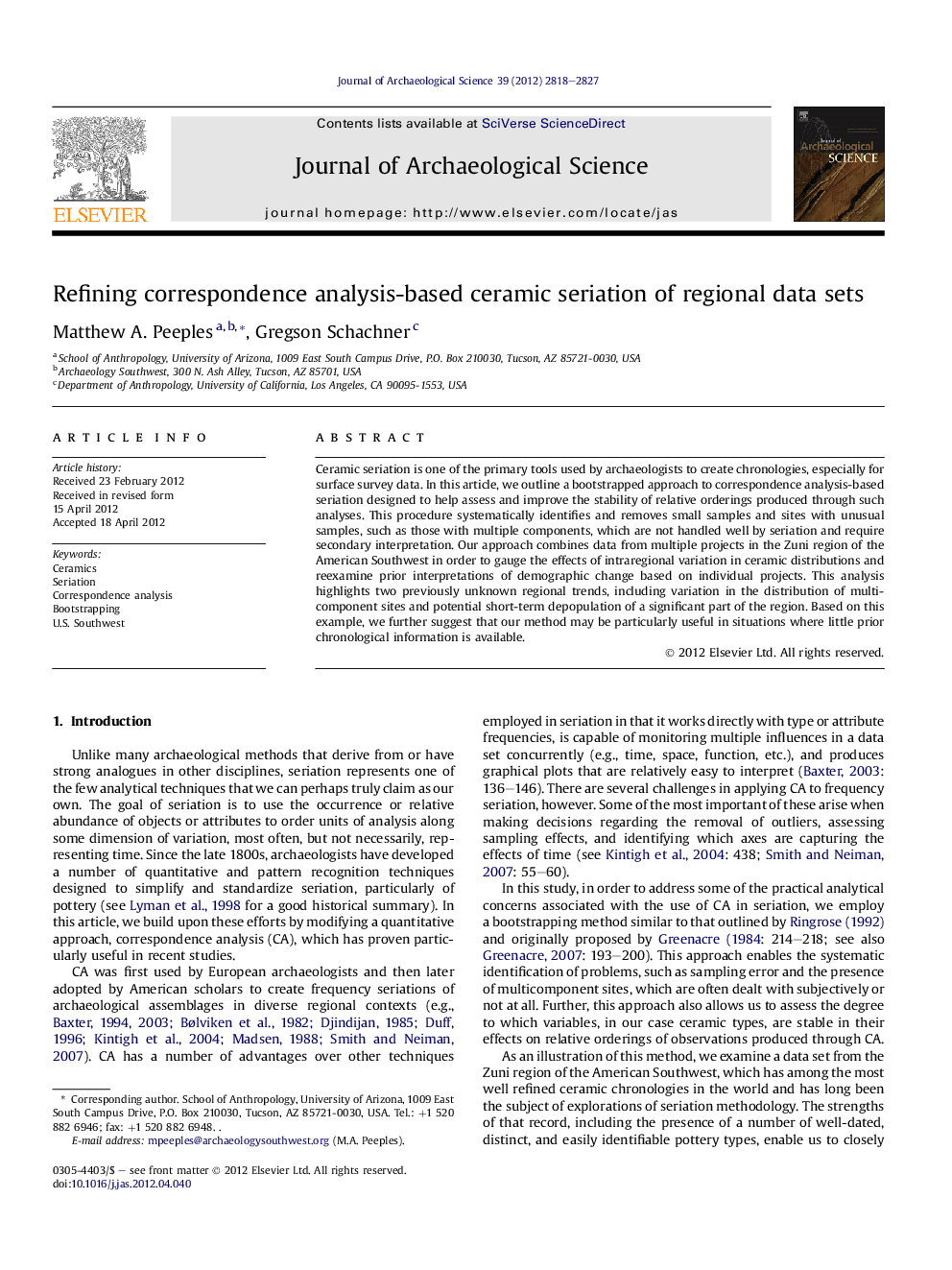| Article ID | Journal | Published Year | Pages | File Type |
|---|---|---|---|---|
| 1035636 | Journal of Archaeological Science | 2012 | 10 Pages |
Ceramic seriation is one of the primary tools used by archaeologists to create chronologies, especially for surface survey data. In this article, we outline a bootstrapped approach to correspondence analysis-based seriation designed to help assess and improve the stability of relative orderings produced through such analyses. This procedure systematically identifies and removes small samples and sites with unusual samples, such as those with multiple components, which are not handled well by seriation and require secondary interpretation. Our approach combines data from multiple projects in the Zuni region of the American Southwest in order to gauge the effects of intraregional variation in ceramic distributions and reexamine prior interpretations of demographic change based on individual projects. This analysis highlights two previously unknown regional trends, including variation in the distribution of multicomponent sites and potential short-term depopulation of a significant part of the region. Based on this example, we further suggest that our method may be particularly useful in situations where little prior chronological information is available.
► CA-based frequency seriation can be improved via a bootstrapping. ► Bootstrapping identifies problematic assemblages such as multicomponent sites. ► This approach identifies previously unrecognized trends in Zuni settlement patterns.
